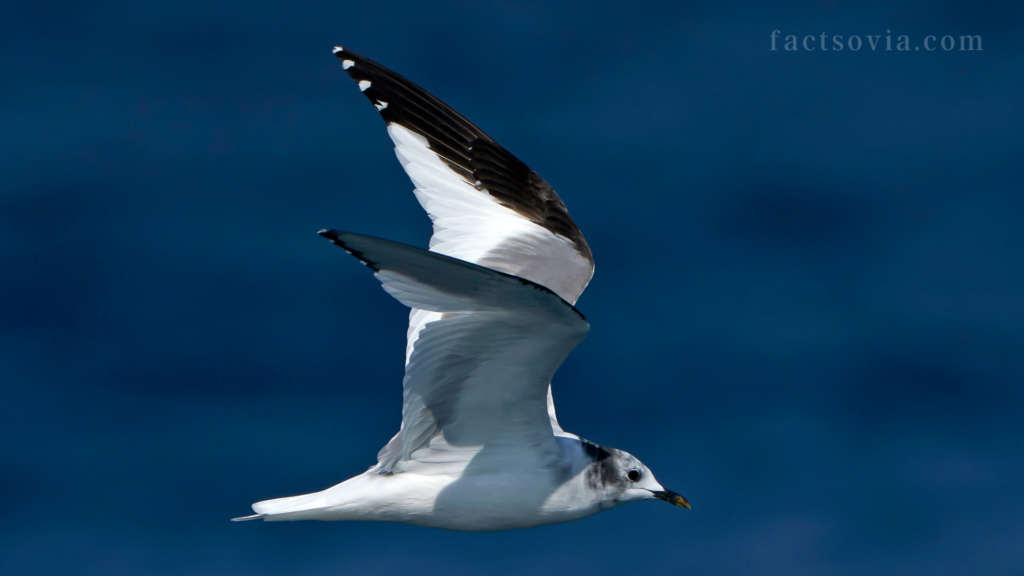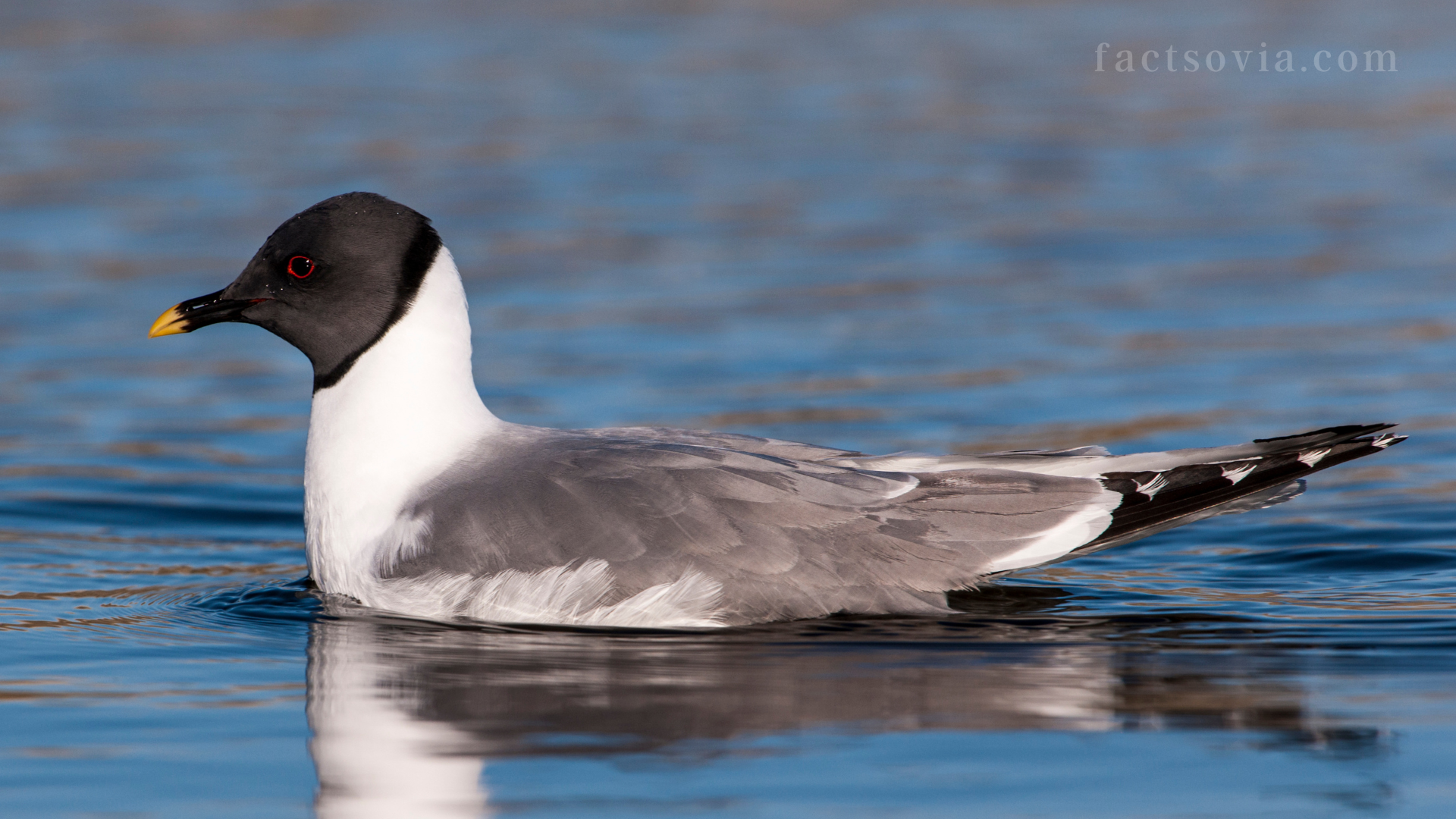We use affiliate links to run our site. When you buy through links on our site, we may earn an affiliate commission, without any added cost to you. Learn more
Seagulls are a common sight along coastlines and near bodies of water, but have you ever heard of the Xeme Seagull? These remarkable birds possess unique characteristics that set them apart from their counterparts.
From their appearance to their behavior, Xeme Seagulls have captivated the attention of researchers and bird enthusiasts worldwide.
In this article, we will explore ten fascinating facts about Xeme Seagulls that will leave you in awe of these extraordinary creatures.
Classification:
| Kingdom | Animalia |
| Phylum | Chordata |
| Class | Aves |
| Order | Charadriiformes |
| Family | Laridae |
| Genus | Xema |
| Species | Xema sabini |
Scientific Name:
The scientific name for the Xeme (Sabine’s Gull) is Xema sabini.
In a nutshell:
| Feature | Description |
| Color | Grey, Yellow, Red, Black, White |
| Skin Type | Feathers |
| Lifespan | Up to 8 years |
| Weight | 4 to 7 ounces |
| Length | 10 to 13 inches |
| Age of Sexual Maturity | 2 years |
| Wingspan | 32 to 34 inches |
| Most Distinctive Feature | Long, pointed tri-colored wings |
| Distinctive Feature | Small heads, slender bill |
| Age of Fledgling | One day |
| Habitat | Arctic tundra, marshy tundra near the coast |
| Incubation Period | 23 to 25 days |
| Age of Molting | 2 years |
10 interesting facts about xeme seagull bird
1. A Distinctive Plumage
Xeme Seagulls are known for their striking appearance. They feature a sleek white body with dark gray wings, making them easily recognizable.
Their elegant coloration adds a touch of grace to their flying maneuvers, as they glide effortlessly above the water.

2. Nimble Divers
One remarkable characteristic of Xeme Seagulls is their exceptional diving skills. Unlike other seagull species, Xeme Seagulls are proficient divers, capable of plunging into the water from considerable heights.
This ability allows them to swiftly catch their prey, including small fish and invertebrates.
Things you probably don’t know about penguins
3. Agile Fliers
Xeme Seagulls are highly skilled fliers, known for their agility and acrobatic maneuvers in the air. They possess long, slender wings that enable them to navigate through the wind effortlessly.
Watching them perform intricate aerial displays is a sight to watch.
4. Social Birds
These seagulls are social creatures, often found in large groups called colonies or flocks. They engage in various activities together, such as hunting for food, nesting, and defending their territory.
Xeme Seagulls exhibit a strong sense of community and cooperation within their groups.
5. Breeding Habits
Xeme Seagulls typically breed during the spring and summer months. They construct nests on rocky cliffs or in coastal vegetation, providing a safe environment for their eggs and chicks.
These nests are often shared with other bird species, creating a diverse and harmonious breeding environment.
6. Migratory Patterns
Xeme Seagulls undertake extensive migratory journeys, covering vast distances each year. They can be found in various regions, including the Arctic, sub-Arctic, and coastal areas of Europe and North America. Their ability to adapt to diverse environments is truly remarkable.
Interesting Facts You Probably Don’t Know About USA
7. Vocal Communication
Communication plays a crucial role in the lives of Xeme Seagulls. They utilize a wide range of vocalizations to convey messages and maintain social bonds within their colonies. From high-pitched calls to rhythmic squawks, their vocal repertoire is both diverse and fascinating.
8. Adaptations for Survival
Xeme Seagulls have evolved several adaptations that aid in their survival. Their keen eyesight allows them to spot prey from a distance, while their webbed feet and powerful beaks assist in capturing and consuming food.
These adaptations have enabled them to thrive in their coastal habitats.
9. Threats and Conservation
Like many bird species, Xeme Seagulls face various threats to their survival. Habitat destruction, pollution, and climate change pose significant challenges to their populations.
Conservation efforts, such as the protection of nesting sites and raising awareness about these remarkable birds, play a vital role in preserving their existence.
10. Symbolism and Cultural Significance
Xeme Seagulls hold cultural significance in many coastal communities. They are often associated with freedom, resilience, and a connection to the ocean.
These birds have inspired artists, writers, and poets throughout history, symbolizing the untamed beauty of the natural world.
In Summary:
| Primary Prey | Fish, crustaceans, insects, and offal |
| Social Behavior | Group-oriented |
| Migratory | Yes |
| Nesting Location | On the ground on islands or the edges of ponds |
| Molting Age | 2 years |
| Main Predators | Peregrine falcons |
| Conservation Status | Least Concern |
| Number of Species | 4 |
Conclusion:
We hope you enjoyed learning about these 10 fascinating facts about Xeme Seagulls. These amazing birds deserve our respect and admiration for their incredible adaptations and skills.
If you liked this article, please share it with your friends and family who might also be interested in Xeme Seagulls.
You can also check out our website for more posts on various topics related to wildlife, nature, and conservation. Thank you for reading and stay tuned for more!
Frequently Asked Questions(FAQs):
What animal is xeme?
Xeme is a bird, belonging to the class Aves, order Charadriiformes, family Laridae, genus Xema, and species Xema sabini.
What is Xeme bird?
Xeme bird, also known as Sabine’s gull, is a small gull that is found in the Arctic. It is a migratory bird, spending the winter in the North Atlantic and the North Pacific.
What does xeme eat?
Xeme eats a wide variety of mainly animal food, such as insects, fish, crustaceans, mollusks, worms, and small rodents. It will also scavenge on fish discards from fishing boats.
Who was Sabine’s gull named after?
Sabine’s gull was named after Joseph Sabine, a naturalist who described the species in 1819 based on specimens collected by his brother Edward Sabine, a captain who accompanied John Ross on a voyage to look for the Northwest Passage.
How do you identify a Sabine’s gull?
You can identify a Sabine’s gull by its distinctive wing pattern, forked tail, black bill with a yellow tip, and dark hood during the breeding season. It is also smaller than most other gulls and has a high-pitched call.
What is the real name for a seagull?
There is no such thing as a seagull. The term seagull is a colloquial name for any of the species that belong to the family Laridae, which includes gulls, terns, skimmers, and noddies. The correct name for each species depends on its scientific classification.
How do seagulls eat?
Seagulls eat by picking up food items with their bills and swallowing them whole or tearing them into smaller pieces. They can also plunge-dive into the water to catch fish or fly low over the surface and scoop up prey.
Amazon and the Amazon logo are trademarks of Amazon.com, Inc, or its affiliates.
